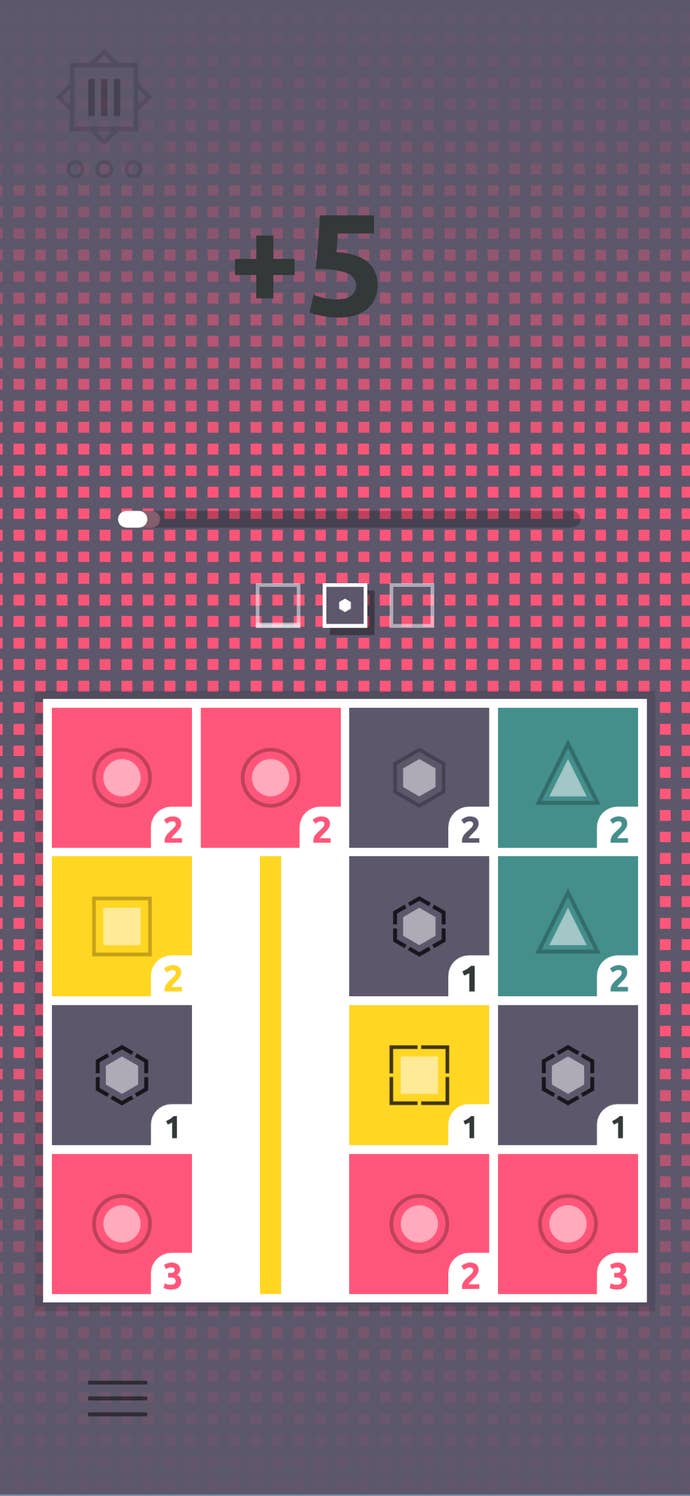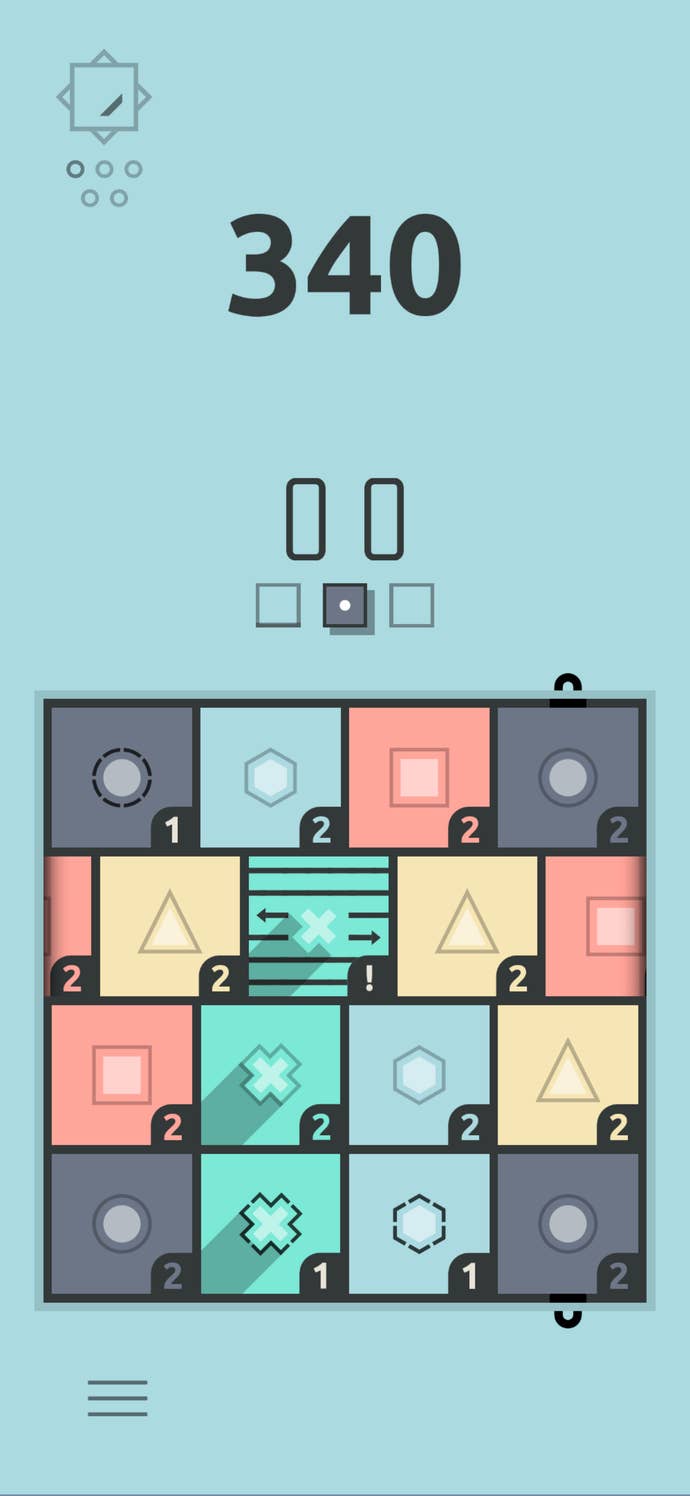It can be odd to discover, over time, what a game is really about.
Finity is a match-three game forApple Arcade.
It delights in pastel colours and endless chiming sound effects.

But what it’s actually about is that crucial element of first-person shooters and MMO raids.
Finity is about target priorisation.
But which match should you make?

Might some be better than others?
Might some be much, much worse?
These simple questions turn a good game into a great one.

I am still working out how to untangle it all.
The basics are simple.
You have that four-by-four grid with blocks of various colours.
But Finity, as the name suggests, deals in the finite.
It hangs back and drops pebbles into the abyss.
So there are limiting factors to all of this.
Every time you move a block, in a row or column, its timer counts down.
The only way to get rid of it from that point on is to match it.
So you don’t just have to make matches, you have to make them thoughtfully.
You’re tuning up the violin for your own funeral.
So play the timers as much as the board, I guess?
Think about both elements?
Or maybe you’ll earn a block that allows you to reset timers.
Those blocks you earn.
They’re a boon.
So why do they make me so much more anxious than I would be if they didn’t exist?
Because they contain in their utility the possibility for waste.
This is a game of reverie and reverie interrupted.
But then you hit a row or column that’s locked and you snap out of it all.
It’s an affront!
But it’s an affront that you caused, at some point back in the past.
It’s a two-player puzzle game for one person.
Honestly, play it and you’ll see it makes sense.
Some things, of course, are true of all puzzle games.
An ascending series of chimes will never fail to get the heart beating faster.
But Finity does much more than it needs to.
It’s all incredibly thoughtful, and incredibly precise.
It’s telling you you’ve moved back into the original alignment.
It’s telling you the ship’s wheel has done a full rotation.
I understood this immediately when I played, but I understood it completely unconsciously.
Finity accessibility options
Coloured blocks also have shapes printed on them to differentiate them.
All of this, yes, but that immediacy that powers it all.
The smooth sliding of the rows, the columns.
The clicks, the pops.